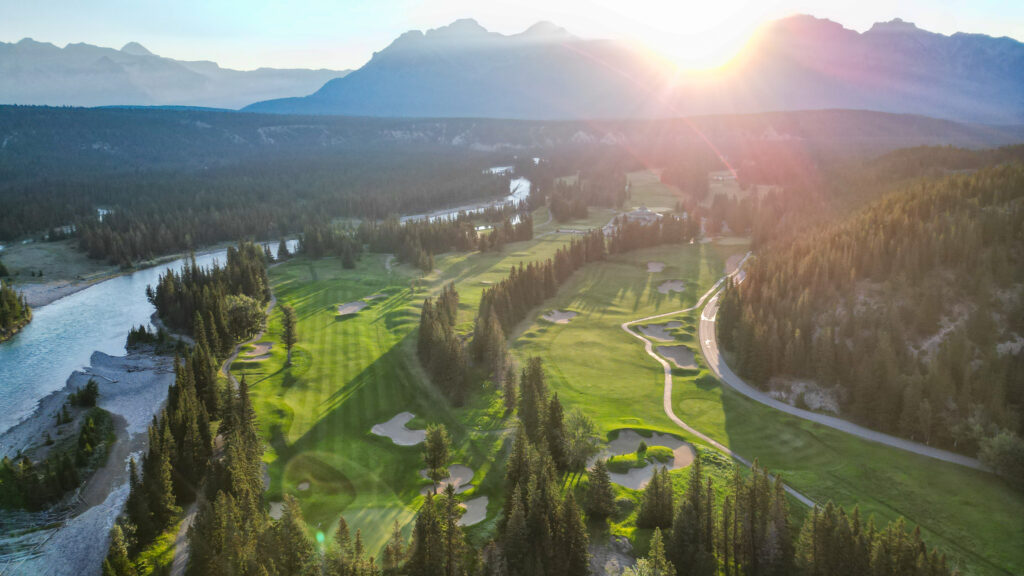Top 100 Golf Courses in Canada, 2024-2025 Part II – Beyond The Contour
Skip to content
Reading Time: 40 minutes
Beyond The Contour Top 100 Golf Courses in Canada returns after the inaugural list dropped in 2022.
This list represents the very best golf in the country, public or private. In total, there are over 2,300 golf courses coast-to-coast, with everything from Victoria, British Columbia to Port Blandford, Newfoundland represented. Every province has at least one course on this list (sorry, Yukon, Northwest Territories, and Nunavut), showcasing the diversity in a very golf-focussed country.
To view the “Near Misses,” the courses that just missed the Top 100, click here.
To purchase the limited-edition Top 100 Book, click here.
To view the courses ranked from 51st-100th, click here.
Course write-ups courtesy of Beyond The Contour Editorial Staff unless otherwise stated. Photos belong to Beyond The Contour unless otherwise mentioned.
 50. Wolf Creek (Links)
50. Wolf Creek (Links)
[Previous rank: 43rd]
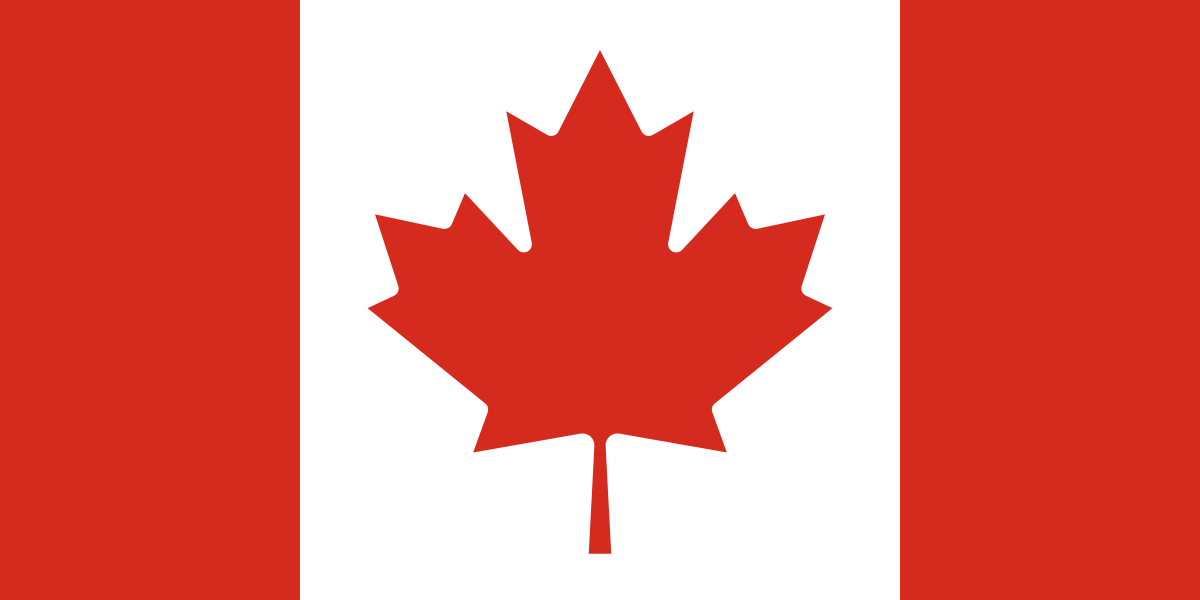

Architect:
Rod Whitman
Year Built:
1992 & 2012
It is hard to imagine an inland site that is better suited for golf than that of Wolf Creek’s Links course, which meanders gently through wooded forest before emerging into the vast expansiveness of the sandy prairie landscape for the back nine. On the front nine, Whitman’s style is consistent with No. 53 Wolf Creek’s Old course, the first of the two golf courses built on the same property. Small, wickedly contoured green complexes and devilish angles (such as the par 4, 3rd) are eventually replaced for a modern rendition of Whitman’s work that is closer to Blackhawk, Sagebrush, and Cabot Links on the back nine.
We prefer the big, bold back nine, featuring a collection of some of Mr. Whitman’s best holes. The matching par 5’s at the 11th and 15th both play around a shared “Hell’s Full Acre” waste area, while the par 4, 13th, nickamed “Kansas,” rises to a green tucked on the hillside to the left, with the fairway below on the right. Those looking to learn about Rod Whitman’s progression as an architect will find the most interesting case study at Links, which blends his two eras into one product.
 49. Waskesiu
49. Waskesiu
[Previous rank: 64th]

Prince Albert National Park
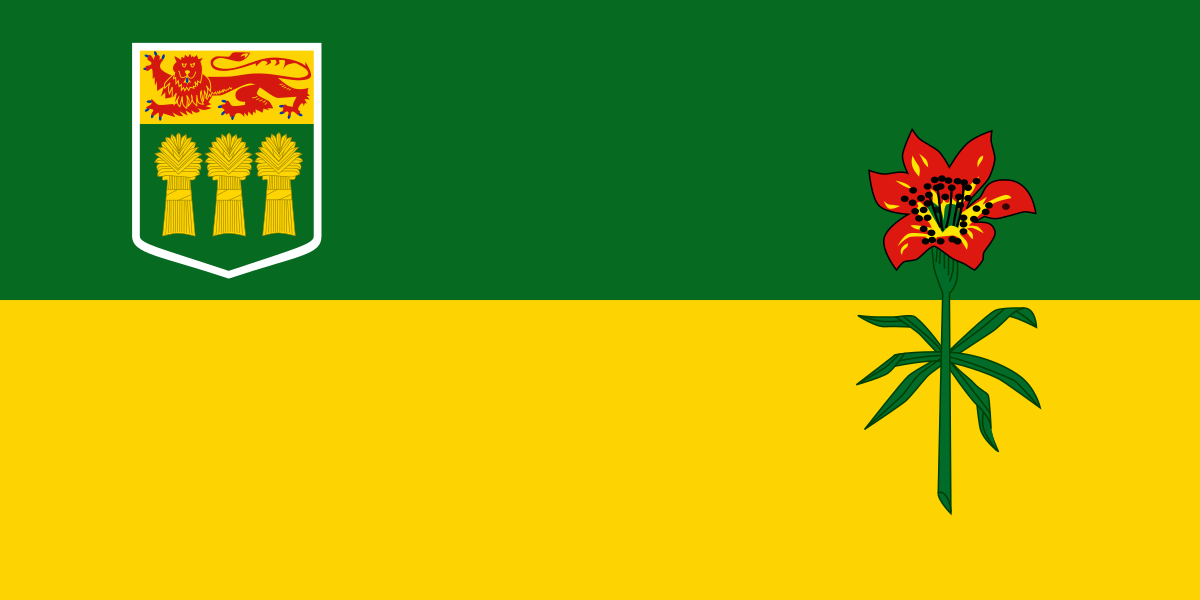
Architect:
J.K. Atkinson, Stanley Thompson
Year Built:
1935
Golf in the British Isles feels as if they just laid a blanket of grass over the rumbled, sandy terrain and enjoyed playing over the natural contours. Minus the sandy base, Waskesiu provides the same excitement—a true rarity in Canada. In fact, it would be difficult to find a golf course that ties into its surroundings better than Waskeiu, as it so elegantly dances across Prince Albert National Park’s hilly, wonderful topography.
Whether Stanley Thompson actually contributed to the design remains highly contested to this day, but if he did, a handful of the holes would fit right in with some of his best. For example, the dramatic short par 4, 11th, plays up and over a ridge before falling sharply downhill to a green cut on grade. Equally as thrilling is the rising par 4, 7th, which is reminiscent of Cape Breton Highlands Links. The 8th, a superb par 5 through the uprights, and the up-and-over par 4, 18th, round out a large cast of show stoppers, but the entire layout is captivating.
If one is not a fan of rambunctious terrain, blind shots, fun, drama, and of course, good golf, they should avoid Waskesiu, but to our liking, it fits right at home on a Top 100 list.
 48. Bigwin Island
48. Bigwin Island
[Previous rank: 59th]

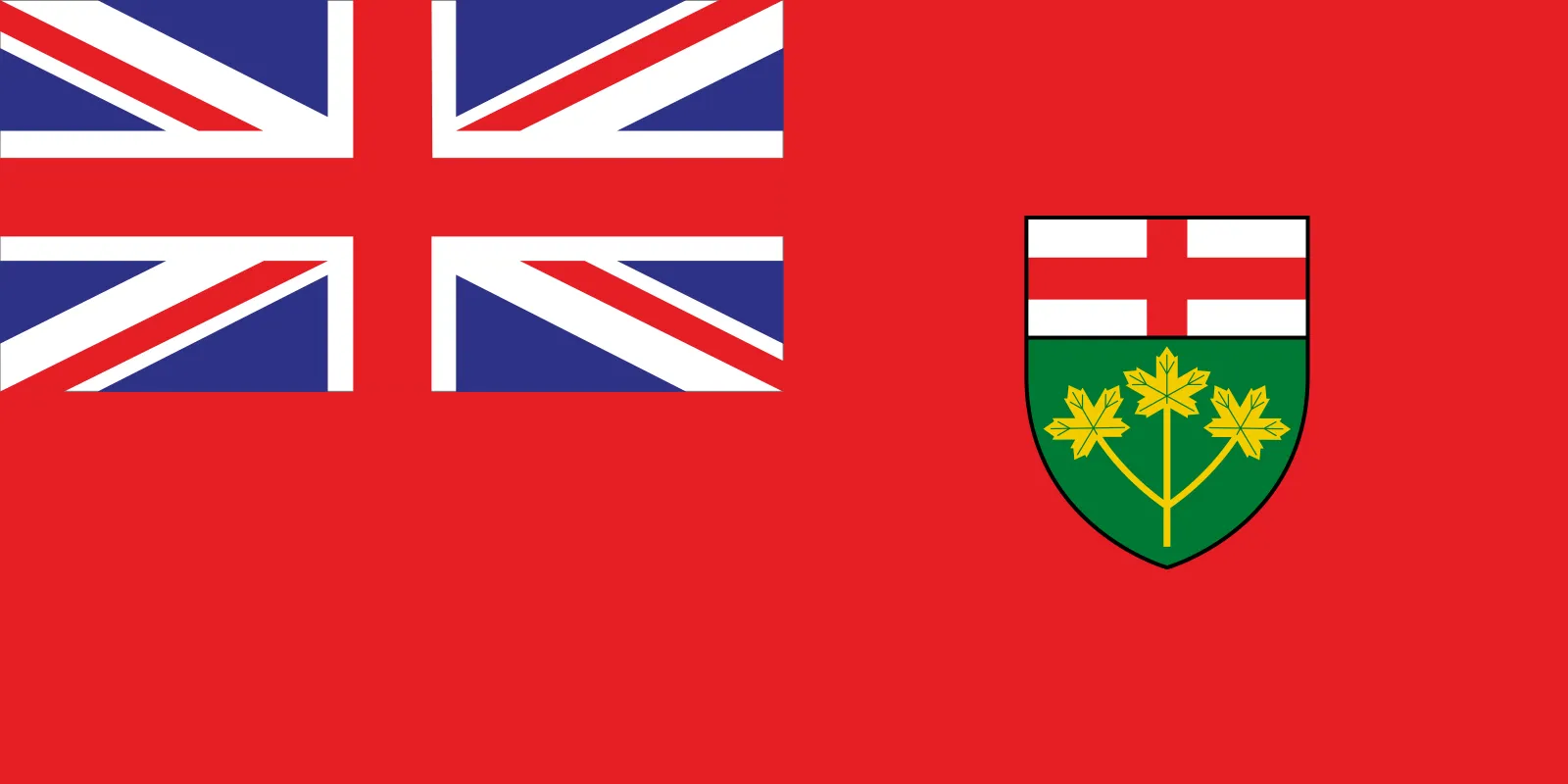
Architect:
Doug Carrick
Year Built:
2001
Part of the rating process is to ideally put aside any outside influences and only focus on the golf course, but at Bigwin Island, is that possible? The experience itself is part of the lure of such a place, where a ferry ride to the island is required in order to play Doug Carrick’s north Muskoka gem.
Even so, the golf itself is a fitting compliment to one of Canada’s single greatest golfing experiences, and to Carrick’s credit, he rose to the occasion. Bigwin’s width exposes the golfer to a sense of comfort, at least until greenside where the the penalty for missing shots is often very difficult recoveries. Playing the angles matter and is a prerequisite for success here.
In a golf course full of standouts, the 6th and 18th are dramatic and obvious fan favourites, but we’re also fond of the sweeping par 4, 14th, working its way down the hillside and the “Bottle”-esque par 4, 9th, with its central bunkers.
 47. Brantford
47. Brantford
[Previous rank: 71st]


Architect:
Nicol Thompson, Robbie Robinson, and Rod Whitman, Dave Axland, and Keith Cutten
Year Built:
1919
Brantford Golf & Country Club dates back to the 1870s, but the golf course we play today is courtesy of Hamilton Golf & Country Club’s Head Professional and Stanley Thompson’s brother Nicol in 1919. The property itself is quite dramatic, starting up in the flats above Grand River before diving into the bottom of the valley on the 3rd & 4th hole where a majority of the golf course rests.
Though the credit, in large, belongs to Nicol, the talented trio of Rod Whitman, Dave Axland, and Keith Cutten are responsible for Brantford’s resurgence back into the Top 50. Through tasteful bunkers that maximize the property and the addition of five new greens, the golf course is largely a creative playground for shot-shapers and short game enthusiasts to navigate. Take the green at the par 4, 7th, as an example, or else the entirely bunker-less par 4, 13th, too.
Perhaps more than any other course in recent memory, Brantford is the sterling example of a tasteful, budget-conscious renovation and how it can dramatically improve the final result when you put the right people in place.
 46. Kawartha
46. Kawartha
[Previous rank: 44th]


Architect:
Stanley Thompson, Ian Andrew
Year Built:
1932 & 1937
Is this the best set of bunkers in the country? If not, Kawartha is punching way above its 46th ranking. When marrying such dramatic bunkering and invigorating architecture draped over fruitful land, the result was always going be promising.
In contrast to the notable “Thompson Five,” Kawartha feels distinctly down to earth. The 2nd, for example, is sneaky brilliant with a two-tier green sitting on-grade, and the back tier actually lower from the front pad. The 3rd, wrapping around a massive bunker complex and a tree, is riveting, before merging into the subdued par 5, 4th.
Panellists identified the par 5, 11th, par 4, 15th, and par 4, 14th, and of course the final par 3, 18th, as the highlights on the inward nine, though the new 12th and 17th holes are unfortunate and somewhat clunky additions to an otherwise charming layout.
 45. Tobiano
45. Tobiano
[Previous rank: 34th]

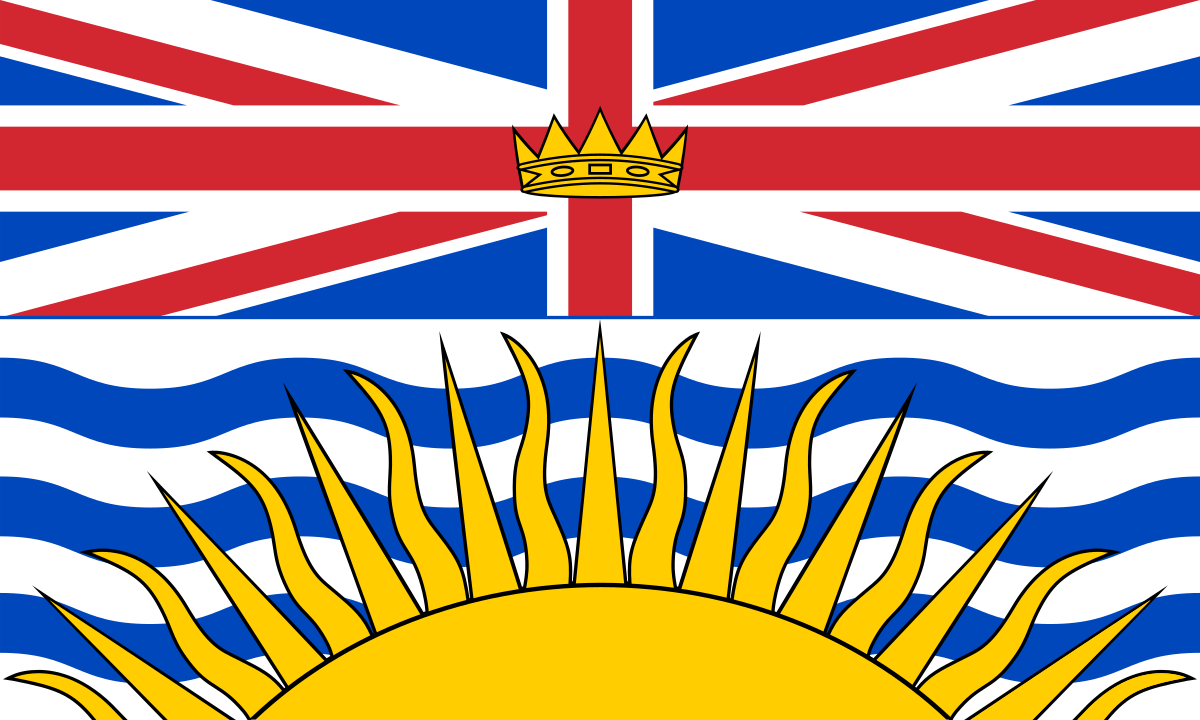
Architect:
Thomas McBroom
Year Built:
2006
It is said that Thomas McBroom found 20 possible ways to route Tobiano, which trots its way around land that makes you feel as if you’re playing on Mars and not the Interior of British Columbia. If that’s true, then, we’re happy that holes like the 6th and 14th made the final cut, both of which stand tall amongst McBroom’s best par 4’s.
Much of the golf course interacts with the unpredictable desert-ish topography. For example, the 7th, playing to an island green on a plateau high above the sagebrush and fescue, is not only terrifying, but downright mean in the wind (which usually blows here). Holes like the par 5, 13th, playing around a canyon, take full advantage of the surroundings, and also provide a stark overview: in short, bring your “A” game for Tobiano.
 44. Pulpit Club (Pulpit)
44. Pulpit Club (Pulpit)
[Previous rank: 52nd]


Architect:
Dr. Michael Hurdzan & Dana Fry
Year Built:
1990
To the keen observer, the Pulpit course at the Pulpit Club is the grandfather of the golf-heavy region of Caledon, an hour northwest of downtown Toronto. That, and it was also a monumental moment in Dr. Michael Hurdzan’s & Dana Fry’s careers as golf architects as it was their first project.
As far as first holes go, not many get more dramatic as the Pulpit’s, a par 5-converted-to-a-4 tumbling down the hillside to a green guarded by water right. From there, most of the front nine routing fights its way back up to the top to make for a similarly riveting start to the back nine.
Of particular interest, Pulpit features a ton of concepts untested in architecture. As a result, a lot of interesting design principals are on display: the triple fairway at 13, for example, is dramatic and unique, but has strategic value on each route; the three-leaf clover green on the par 3, 3rd is epic; and finally, the par 4, 6th, actually doglegs around a small cemetery. How many golf courses can showcase this much creativity in the concepts presented?
 43. Mickelson National
43. Mickelson National
[Previous rank: 46th]


Architect:
Rick Smith
Year Built:
2019
Unlike our friends to the south, Canada does not have a surplus of massive stadium-style golf courses, but Mickelson National is not only the newest of the bunch, but one of the best too.
Fans of minimalism might potentially scoff at the contrived nature of literally sculpting a golf course out of the prairie land—which a valid criticism—but what Rick Smith, with input from Phil Mickelson, built here is full of strategy. The drivable 7th, for example, is better attacked from the upper left fairway, even though it’s much skinnier and more difficult to play to. The 10th and 11th feature centreline bunkers that direct traffic, while mounding allows bunkering on the outside edges of holes like the 2nd and 15th steer the golfer down the middle. It might not be everyone’s cup of tea, but without question, there is quality golf found throughout.
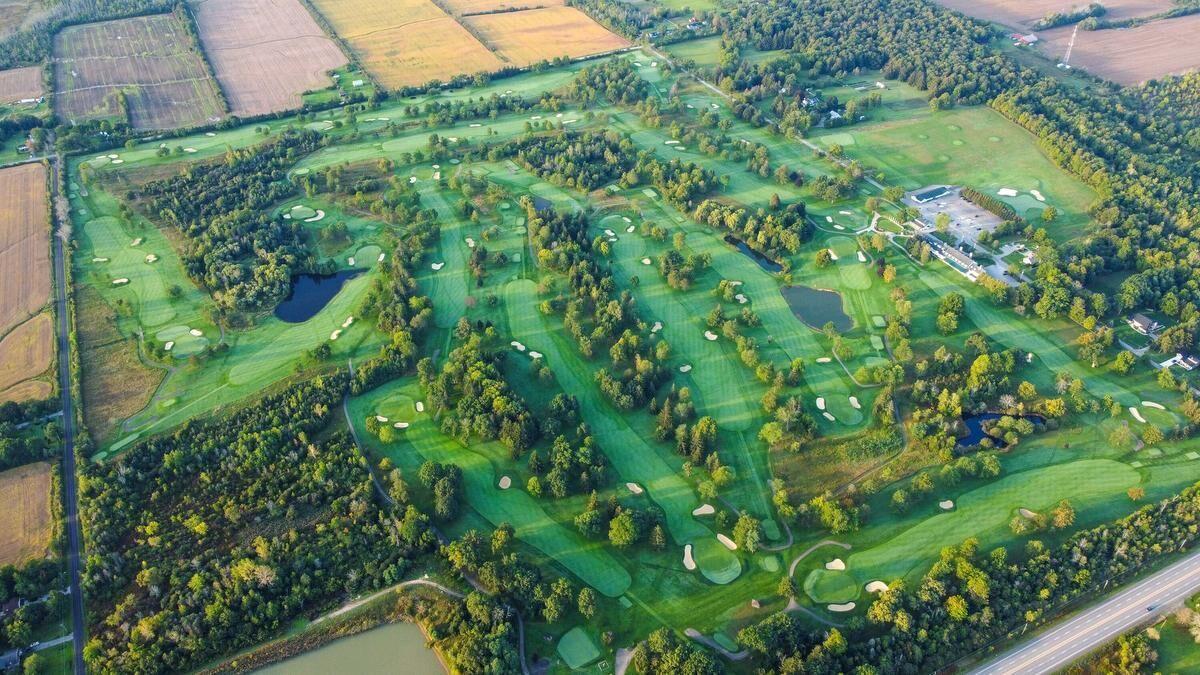 42. Cherry Hill
42. Cherry Hill
[Previous rank: 40th]


Architect:
Walter Travis, Ian Andrew
Year Built:
1922
Photo credit: Hamilton Spectator
Despite the misleading name, Cherry “Hill” is the best flat golf course in the country, with only a half-club elevation into the 9th and 18th perched into the hill atop which the clubhouse sits. As a result, the golf course primarily relies on Walter Travis’ greens to pack a punch.
Thankfully, you could argue Cherry Hill has the best set of greens in the country. Travis’ internal contours are evident from the very first green. Knobs, ridges, slopes, and tiers are scattered throughout the routing’s eighteen surfaces, with so much meant to be discovered across numerous plays and further examination.
Don’t believe the greens are as aggressive as we say? Well, ,Lee Trevino laid up all four days on the par 3, 11th during the 1972 Canadian Open. In the 50 years since, green speeds have dramatically increased, while the surfaces stayed the same… Good luck!
 41. Humber Valley
41. Humber Valley
[Previous rank: 30th]

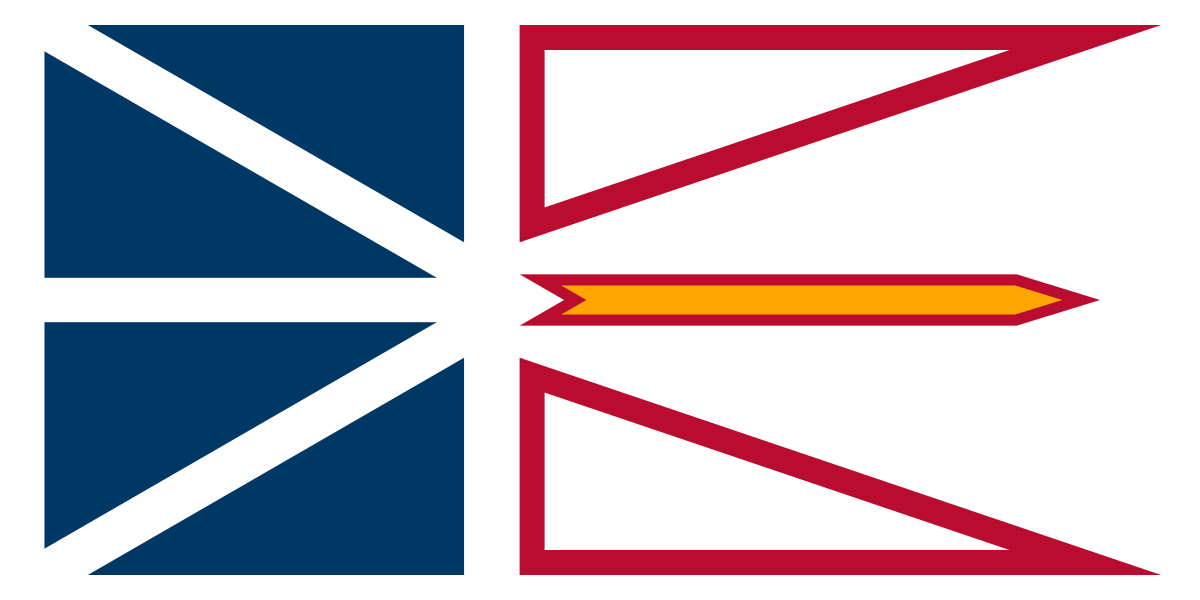
1st, Newfoundland & Labrador
Architect:
Doug Carrick
Year Built:
1994
There is destination golf, and then there is Humber Valley, situated on the west side of Newfoundland. In order to get here, one must either drive the 6 hours from St. Johns, or fly into Deer Valley.
At 41st in Canada, we would be willing to vouch that it is, in fact, worth the journey. As the name suggests, the golf course itself interacts with the Humber River twice, transporting the golfer by it once on the front nine (par 3, 5th), and then again for the climax of the back nine at the 14th and 15th.
There’s a shocking amount of elevation change that Doug Carrick managed to take full advantage of, all while mixing in perhaps the finest set of green complexes he crafted in his illustrious career.
 40. Eagle’s Nest
40. Eagle’s Nest
[Previous rank: 50th]


Architect:
Doug Carrick
Year Built:
2004
Photo credit: Visit Vaughan
Admittedly, Eagles Nest is a bit of an odd golf course. Largely, because of the mixture of the two bunkering styles, with small, pot-style bunkers and blown out, modern bunkers co-existing (and occasionally on the same hole.) Even so, Carrick did a fantastic job of blending the layout between the hilly parkland terrain and the linksy-infused homages.
Even with the different bunker styles scattered throughout, we would argue that the mix between sod wall bunkers and massive blow out bunkers is tastefully done. When a bunker is built into the faux-dunes or stadium mounds, it’s a blowout style bunker; anywhere else, it’s a riveted pot bunker. An underrated part of Eagles Nest is the journey, which beautifully meanders through the various landscapes to produce one of Canada’s most interesting modern layouts.
 39. Maple Downs
39. Maple Downs
[Previous rank: no change]


Architect:
William F. Mitchell, Ian Andrew
Year Built:
1954
Originally designed by the unheralded William Mitchell in 1954 and routed across some of the best land in the Greater Toronto Area, Maple Downs is another complete overhaul by Ian Andrew, and, just as at No. 31 Laval-sur-le-Lac (Blue), the end product he delivered here is exceptional. From tee to green, much restraint was applied, with most holes featuring only one or two bunkers that, nevertheless, greatly dictate the strategy for the golfer who seeks the ideal line into the severely canted surfaces. Andrew allowed the tumbling land and the green complexes to truly be the star of the show; in fact, comparisons to Donald Ross’ work are sure to arise from more than a few golfers.
That is not to say, however, that the layout lacks interest from tee to green; in truth, there are few courses in Canada that require the golfer to shape the ball as repeatedly and also cleverly use the numerous kicker and feeder slopes to work his ball towards the difficult to access hole locations. Yet, by modern standards, the course is quite short, with all of the par 5s being at or under 500 yards—in truth, there seems no better high-end Canadian candidate than Maple Downs to break the mold and set their par at 68 or 69.
 38. Algonquin
38. Algonquin
[Previous rank: 42nd]

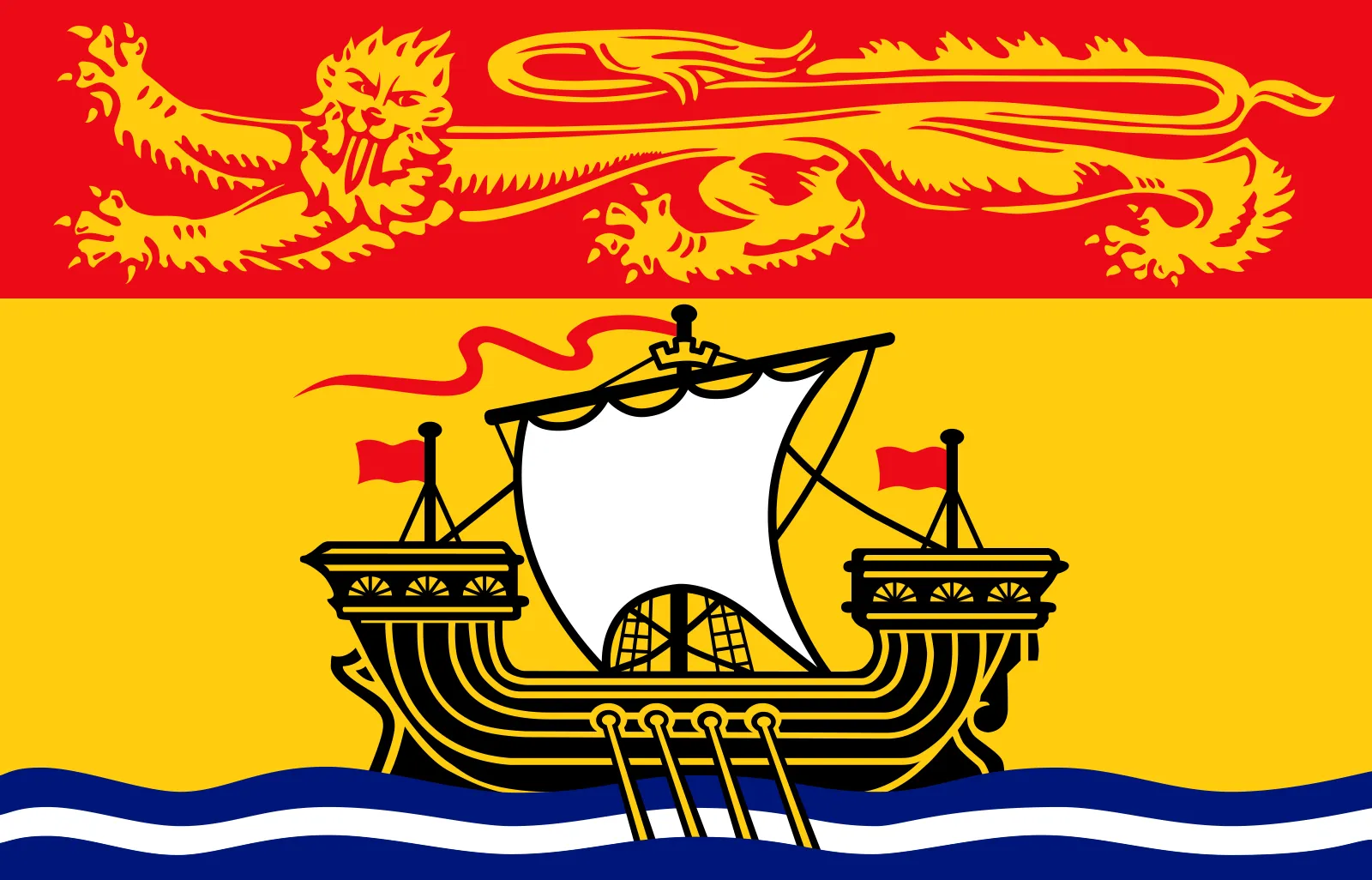
Architect:
Donald Ross, Thomas McBroom, Rod Whitman with Keith Cutten
Year Built:
1922
Photo credit: town of Saint Andrews
Following Thomas McBroom’s work in the 1990s, virtually all of Donald Ross’ 27 holes no longer existed. Sometimes for the better— such as the addition of the par 3, 12th, —but the resort had to stay competitive in an increasingly difficult market thanks to Cabot Cape Breton. The natural reaction? Hire the firm responsible for Cabot Links following a recommendation from Cabot Founder & current CEO Ben Cowan-Dewar. So Rod Whitman and then-associate (now partner) Keith Cutten came in and renovating the Thomas McBroom holes in the style of Ross.
The creation of the new 10th, a quasi-redan infinity green overlooking the Passamaquoddy Bay and the rock & rollin’ par 5, 11th, are by far the best golf holes on property. Fans of the old layout will find comfort knowing the par 3, 12th, remains, albeit improved. Moreover, the short par 5, 13th, continues to impress and creates one of the best stretches of golf in Canada, all while rounding out one of the only oceanside golf courses in the country.
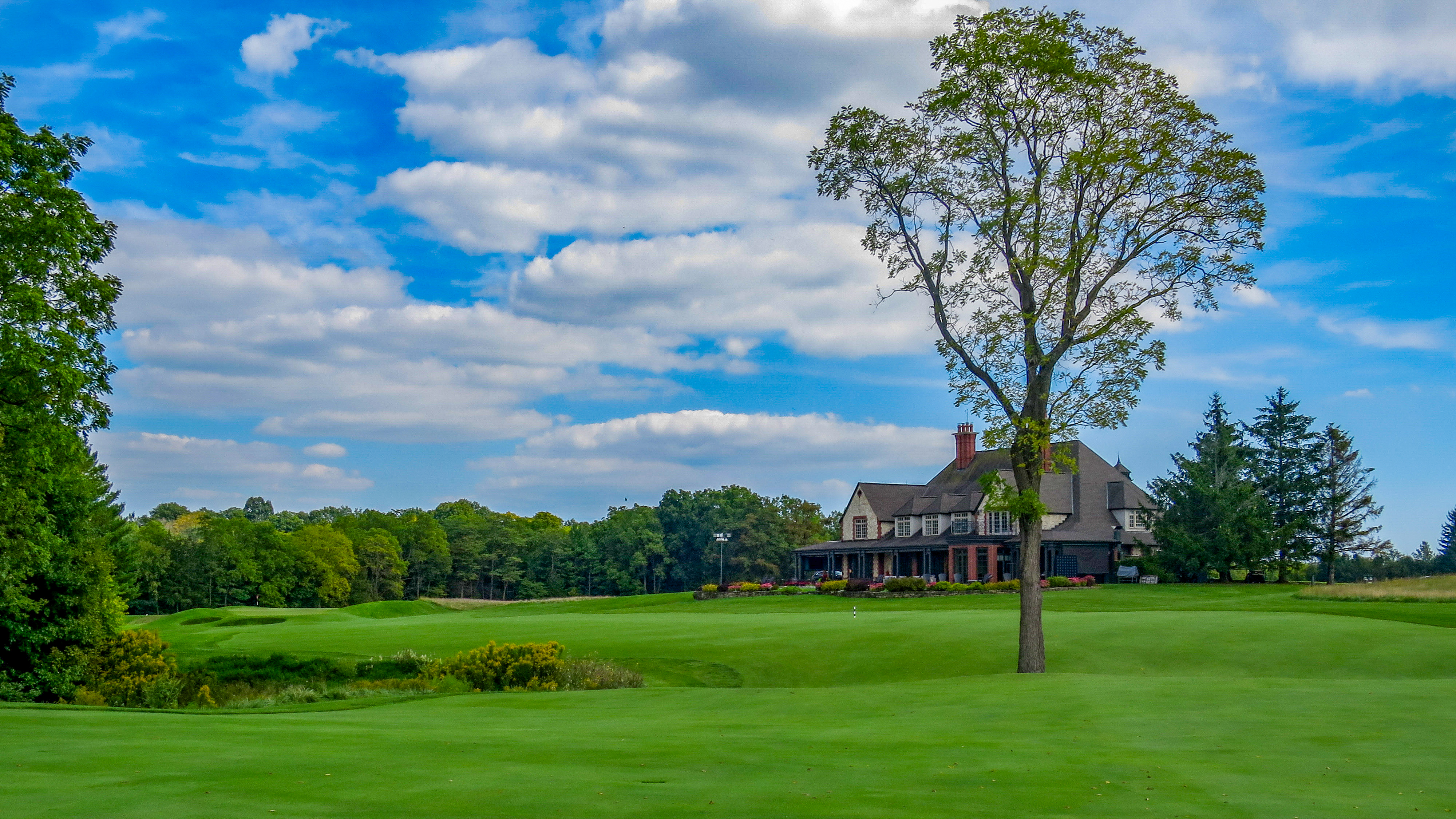 37. Redtail
37. Redtail
[Previous rank: 41st]


Architect:
Donald Steel with Tom Mackenzie & Martin Ebert
Year Built:
1990
Classy and understated are two of the adjectives that are commonly used to describe this facility near St Thomas, Ontario. Founded by Chris Goodwin and John Drake and designed by Donald Steel in 1991,
Redtail was the first of the handful of ultra-exclusive clubs that have opened in Canada over the last 30-odd years.
The golf course traverses a gently rolling property bisected by deep ravines, wandering creeks, and holding ponds. As is the case with all of his catalogue, Steel applied much restraint to his design, allowing the land to provide the primary playing interest. Some might claim that the course lacks interest off the tee, especially on the back 9; however, the putting surfaces and their surrounds are among the most intense, challenging, and interesting in the country.
 36. Royal Colwood
36. Royal Colwood
[Previous rank: 45th]


Architect:
A.V. Macan, Wayne Carleton
Year Built:
1913
While Toronto Golf Club was eastern Canada’s first golf course that really explored elements of strategy and heroism, Royal Colwood was the western counterpart. Macan’s journey through the gently rolling and rocky terrain became the beacon for western golf, and a true testament to his architecture as it still stands today.
Perhaps the most identifiable feature of Colwood are the majestic Douglas Fir trees that tower over the corridors. In some sense, this is the poster child for the Pacific Northwest, with the 12th, playing over a ridge through a chute of trees, as its mascot.
The true highlight of Colwood is watching Macan’s routing interact with slopes to maximize interest. The 6th and 18th, in particular, are two of the best holes not only in the province, but in the whole country.
 35. Predator Ridge (Ridge)
35. Predator Ridge (Ridge)
[Previous rank: 31st]


Architect:
Doug Carrick
Year Built:
2009
When Doug Carrick got the job for “Ridge,” there were already 27 holes from Les Furber on property that people liked (18 of the holes now comprise No. 94 Predator course). The property was far more dramatic, but parts of the original golf course had to be sacrificed. Today, those holes are the 1st, 2nd, 15th-18th, while everything else is new.
There are elements of the Ridge that are as dramatic as No. 30 Greywolf, such as the par 3, 5th, or the par 4, 6th, playing over a massive rock outcropping. And the 9th, playing through numerous rock outcroppings, would not be out of place in Muskoka.
Like most courses in this tier, the macro is obvious impressive, but the micro-features are what really make the golf course memorable. The set of greens here, in particular the surrounding run-offs, kicker slopes and tie-ins, are among Carrick’s career best.
 34. Weston
34. Weston
[Previous rank: 35th]


Architect:
Willie Park Jr. & C.H. Alison, Doug Carrick
Year Built:
1915 & 1922
With its incredibly sloped greens on a rather hilly property, paired with Willie Park Jr.’s routing and greens and Captain Alison’s bunkering, Weston was set up for rousing success.
The 2nd has become somewhat of an iconic golf hole for Weston, but those like the 5th, playing over a ridge, is more engaging for the senses and architecture fanatics. Likewise for the dramatic finisher with its superb fall-away green sitting on-grade with the fairway.
There is discussion of a potential restoration led by celebrated American architect Andy Staples, and with such a dramatic property riddled with architecture royalty, we cannot help but dream about the ceiling here.
 33. Rosedale
33. Rosedale
[Previous rank: 29th]


Architect:
Tom Bendelow, then Donald Ross, Bob Cupp, John Fought
Year Built:
1909
A true inner-city club just north of downtown Toronto, Rosedale is surprisingly quiet. The 1st hole immediately drops into a quaint valley, which the golf course doesn’t climb out of until the 18th.
Credit for Rosedale’s design is a bit of a mess between Tom Bendelow and Donald Ross, but regardless, the style now feels distinctly Ross. The par 3’s all have dramatically small greens, some feature cheeky run-offs surrounding them (like the 4th and 6th), and others are guarded by a gorge (like the short 16th.)
The routing benefits dramatically from interactions with the Don River, which come frequently throughout the middle portion of the round. The true highlight is the slow climb out of the valley starting at the 14th hole, which produces one of the best finishes in the country, best illustrated by the all-galaxy par 4, 17th.
 32. Scarboro
32. Scarboro
[Previous rank: 36th]


Architect:
George Cumming, A.W. Tillinghast
Year Built:
1912
A little known fact is that Scarboro was once part of a trio of A.W. Tillinghast golf courses in Canada, but with Anglo-American and the original Elm Ridge both disappearing from Québec, we’re left to appreciate merely a lone Tillie.
Unlike Elm Ridge and Anglo-American, however, Scarboro is a renovation of a George Cumming layout. Fans of the 4th and 7th might be shocked to learn that those are actually Cumming’s original creators still being used, but Tillinghast’s own creations, like the 8th, the “Tiny Tim” par 3, 11th, and the short 15th are equally thrilling.
There are not many golf courses that finish as unusually as Scarboro, but we like the uniqueness of hitting over a road and the overall quirkiness of this layout, which gives it a unique identity to stand tall among the country’s best.
 31. Laval-sur-le-Lac (Blue)
31. Laval-sur-le-Lac (Blue)
[Previous rank: 33rd]

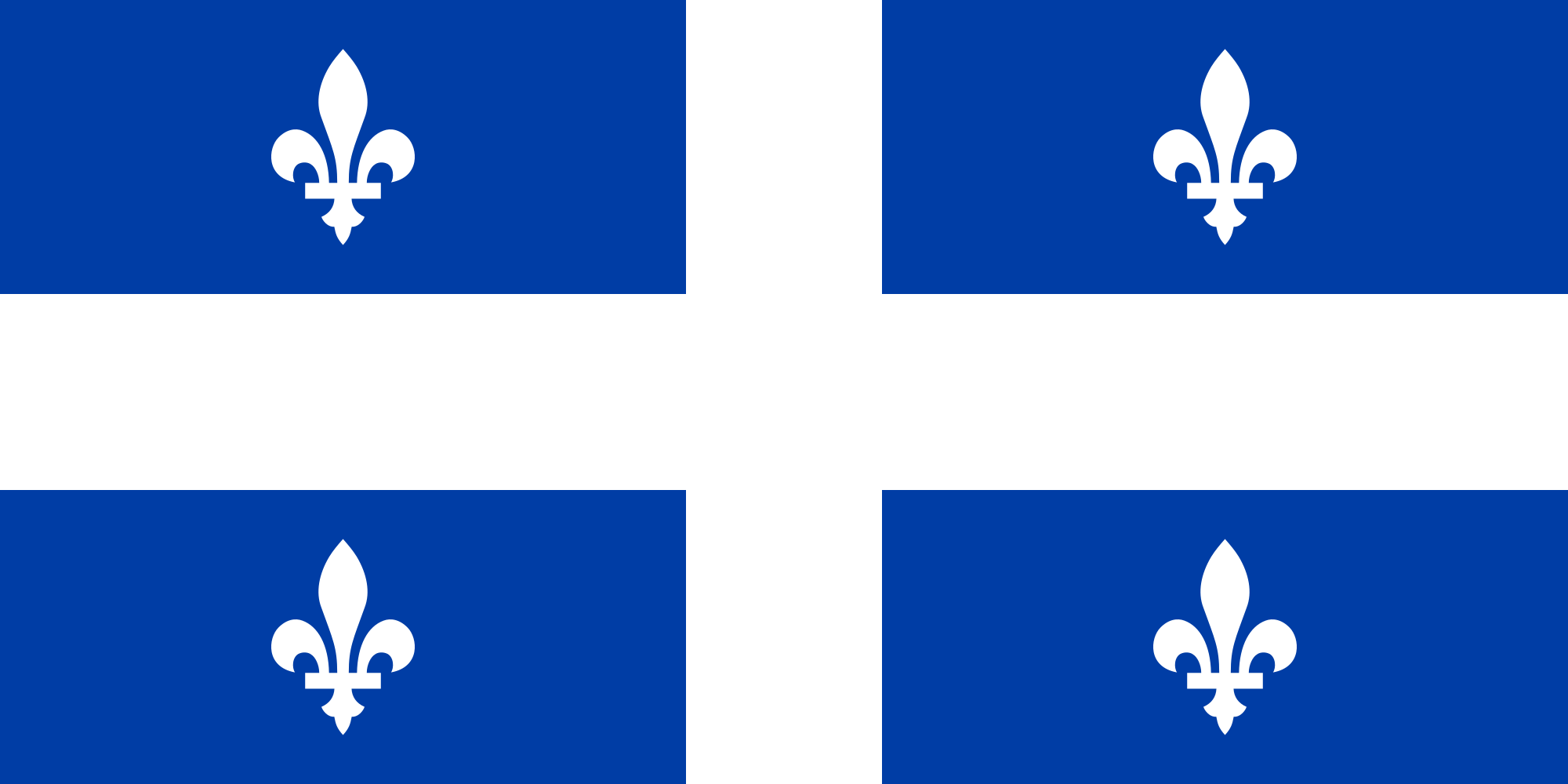
Architect:
Ian Andrew & Mike Weir
Year Built:
2015
One would be hard-pressed to cite a more extreme and successful transformation than the one accomplished here by Ian Andrew in collaboration with Mike Weir. Completely overhauling what was once, according to most reports, a largely uninspiring course with a mix of holes by Howard Watson and Graham Cooke, Andrew and Weir produced an elegant and subtle but amply strategic layout over a nice rolling property in the suburbs north of Montreal. In short, nearly all the strategies from tee to green work—as one would expect from such devout students of the craft—, and they are made prominent by the first-rate conditioning, firm and fast.
Andrew and Weir often apply a compress and release affect, wherein a narrow, tree-lined corridor culminates in a wide expanse of short grass around the green, with the 4th being the most prominent example of this. Whereas the course is often understated off the tee, around the greens, however, it is bold, fascinating, diverse, and, as most who have played here can attest, diabolical. The most note-worthy complexes among the fine set are the crowned 3rd which elicits thoughts of Pinehurst #2; the wide-mouthed, humped, false-fronted 5th, which Andrew claims is modelled after both the 5th and 14th at Augusta National; the classic redan 6th; the 11th set high on a spine with a wicked false front; and the tricky postage stamp-like 15th.
Laval remains Canada’s best example of the kind bold, imaginative renovation that has become prevalent south of the border during this “golden age of renovation and restoration”, at places such as Sleepy Hollow, Moraine, and Old Town.
 30. Greywolf
30. Greywolf
[Previous rank: 26th]


Architect:
Doug Carrick
Year Built:
2000
We get it, mountain golf is extremely hit-or-miss. Thankfully, Greywolf is the genre’s absolute best among its modern iterations. Doug Carrick’s decision to route the opening three holes directly uphill benefits the pacing down the road as most of the golf course, minus the 14th and 18th, then plays downhill.
Most assume Greywolf is a one trick pony, and in some respects, you could argue that that is true. It’s more of a compliment to the par 3, 6th, aptly titled “Cliffhanger,” which rivals only the 4th at Banff Springs and the 16th at Cabot Cliffs. But the supporting cast is not to be messed with here. The uphill par 5, 3rd, is an impressive three-shot hole routed up the mountain, while the downhill par 5, 5th, is perhaps Carrick’s finest par 5. The back nine keeps up the momentum with a good finishing stretch, minus the anti-climatic par 4 closing hole.
 29. St. Thomas
29. St. Thomas
[Previous rank: 37th]


Architect:
Stanley Thompson & Robbie Robinson, Ian Andrew
Year Built:
1923
Those who get the chance to play “Union” (as it is locally called) will likely gravitate to the holes down in the valley playing alongside the creek, but those creations are actually courtesy of Robbie Robinson. Most of Stanley Thompson’s work plays along the gentle terrain above, relying more on smaller contours and interesting greens than the macro interest down below
Holes like the opening three are a true firm handshake to the golf course, though some might not love the 2nd as much as we do. The 4th climbs out of the valley to make room for the stretch from 5 to 8, which plays over a shared topographic ridge, a main feature throughout.
Credit belongs to Ian Andrew for merging the styles of both architects while seemingly restoring Thompson’s golf course.
 28. James Island
28. James Island
[Previous rank: no change]


Architect:
Jack Nicklaus
Year Built:
1997
Until recently, James Island was the private golf course of billionaire Craig McCaw off the coast of Sydney, British Columbia, near Vancouver Island. Discovery Land, responsible for successful USA ventures like Estancia, Gozzer Ranch, and Silo Ridge, purchased this Jack Nicklaus golf course, and the future has never looked brighter.
The golf course weirdly works its way directly to the ocean for the par 3, 2nd, par 5, 3rd, and par 4, 5th, before working back inland. The ocean then disappears until the backdrop of the par 4, 18th. Unusually, the 9th and the par 5, 16th, both use a lake as a centralized hazard for the layup zone.
It might be exclusive, and most people will likely never play here (unfortunately), but the greatness of this Jack Nicklaus golf course makes it comfortably among the best of his “signature” series.
 27. Shaughnessy
27. Shaughnessy
[Previous rank: no change]


Architect:
A.V. Macan, Les Furber
Year Built:
1964
If the term “players course” ever had such a better ambassador, we have yet to find it in this country. Thus, it makes sense that following the 2011 Canadian Open, Shaughnessy was included among the PGA Tour players’ favourite golf courses on the circuit; it was similarly beloved by the LPGA when they visited for the CP women’s Open in 2023 .
What makes Shaughnessy most impressive, however, is its playability, combining enjoyment for everyday play while also being suitable for the best in the world. All eighteen greens allow some sort of run up shot, and oftentimes, it is preferred to use the natural characteristics, on holes such as the 3rd and 17th
While the property is not overly dramatic, Macan’s routing transports the golfer between dry creek bends, small valleys, and out to the Fraser River to take full advantage of the site’s elements. Pair that with some of his smartest green contours and Shaughnessy has a winner on their hands.
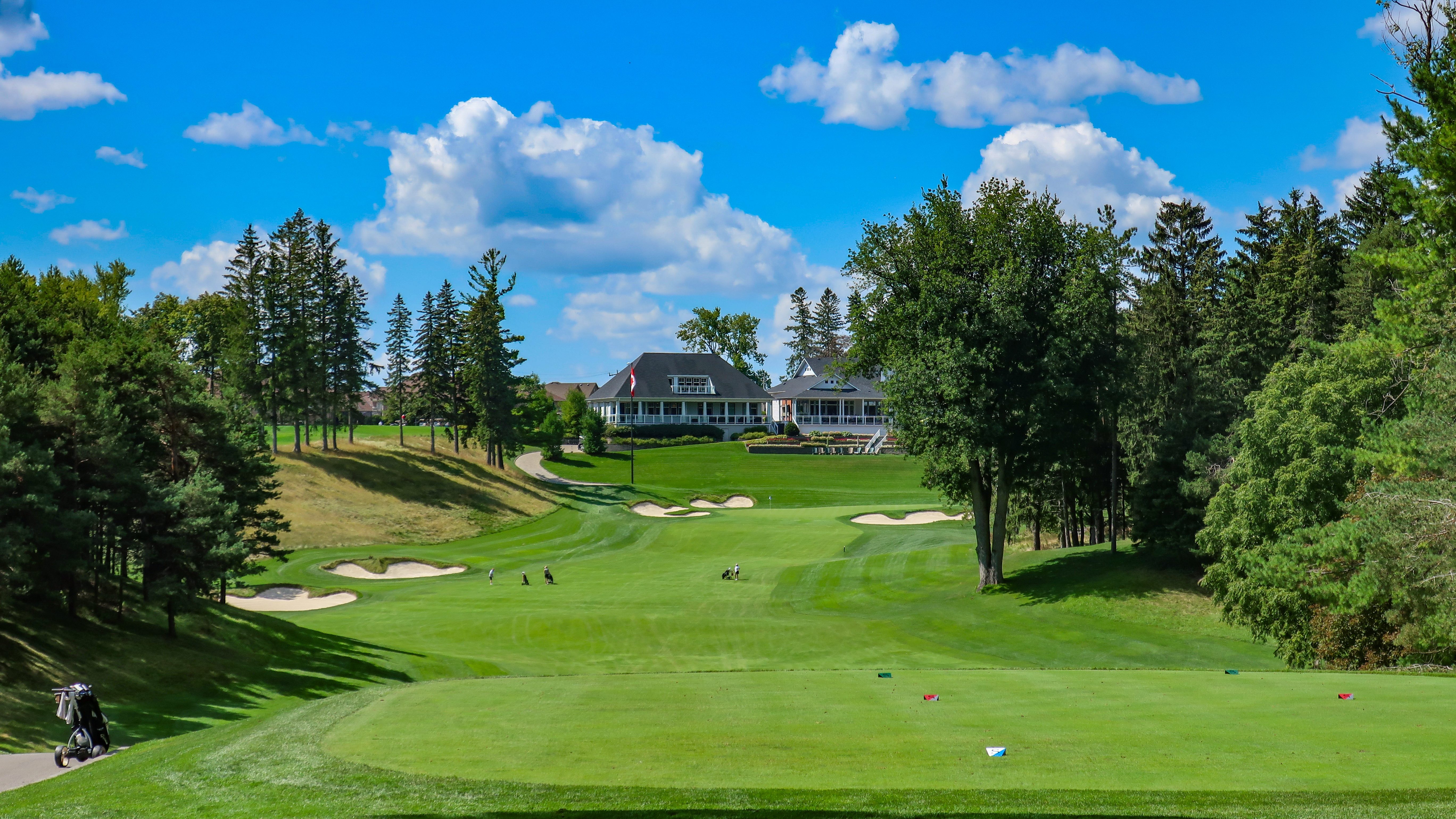 26. Summit
26. Summit
[Previous rank: 23rd]


Architect:
George Cumming, Stanley Thompson, Doug Carrick
Year Built:
1912
Situated north of the city in Richmond Hill, Summit is often forgotten in the discussion of Toronto’s best golf courses, yet its placement at 26th has it right in the thick of things.
The property is extremely hilly, and in truth, it would be difficult to find a more severe inner-city golf course—especially from the Golden Age of golf course design. As a result, the dramatic topography makes way for some pretty extreme moments, such as the opening 1st, the side-winding 9th at the bottom of a valley, and the climb before the fall at the 13th. The uphill closing hole, which climbs out of the valley that the 1st hole tumbles into and culminates at the base of the clubhouse, is one of the great closing holes in the country.
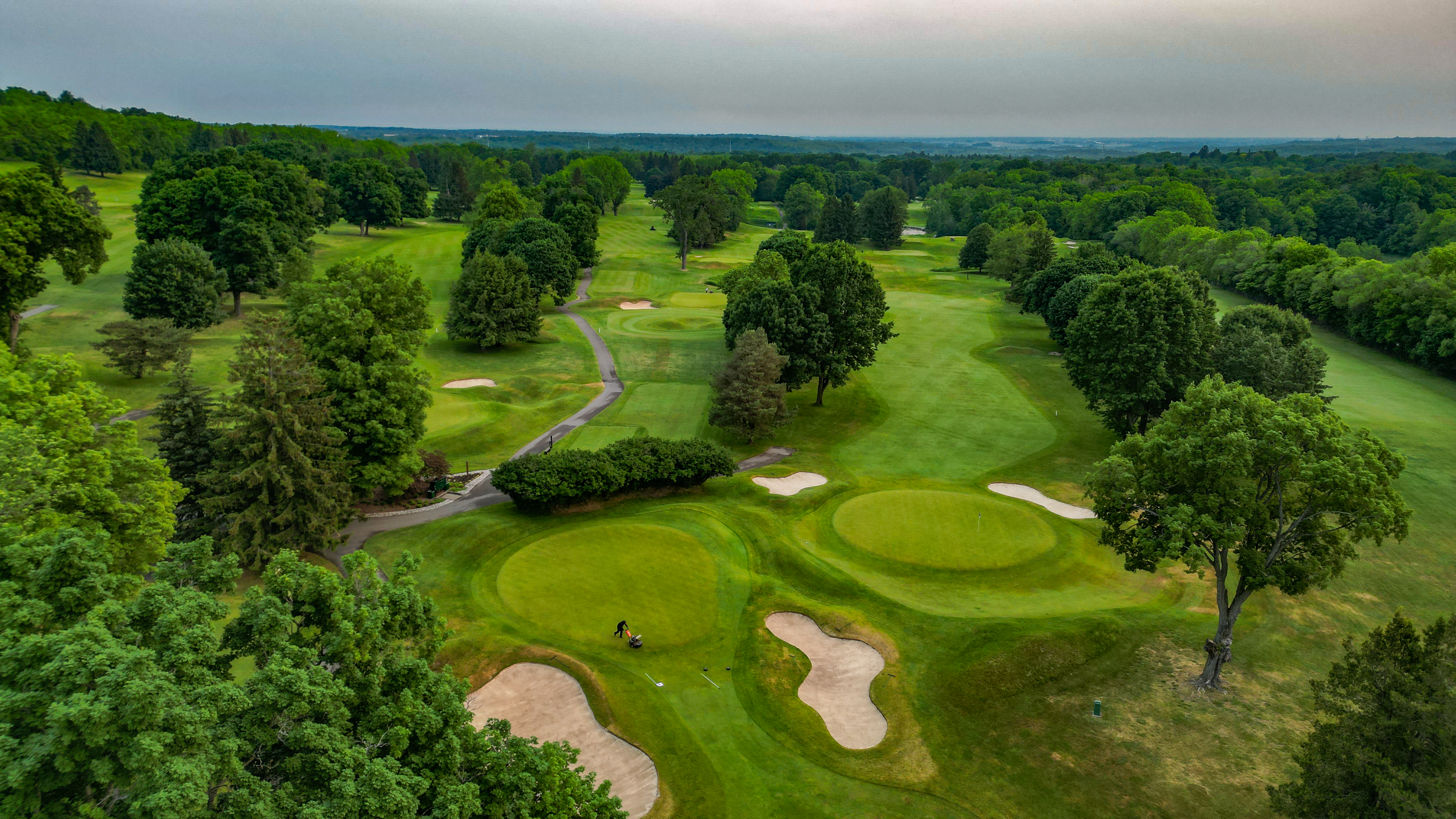 25. Lookout Point
25. Lookout Point
[Previous rank: no change]

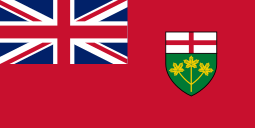
Architect:
Walter Travis, Ian Andrew
Year Built:
1922
A golf course that is fun is not only the highest compliment one can receive, but it is a key component in Lookout Point’s cachet. In fact, there might not be a more random, perplexing, and rambunctious golf course in the country, but we love it all the more for that.
From the hundred-foot faling tee shots on the opening hole of each nine, to the wonderfully quirky set of green surrounds and abrupt surfaces, Walter Travis’ golf course is an engaging journey up and down the Niagara Escarpment, all while playing over the sandy soils to produce compelling golf most Canadian layouts do not have the luxury of. The par 5’s at the 3rd and 7th are see-it-to-believe-it, but the reality is: from start to finish, Lookout is a winning layout of all things we love.
In recent times, the club’s management has committed Ian Andrew to restore and eliminate some of the neglect that had obscured Travis’ brilliance, and future plans indicate that the club, under the direction of its incredibly caring and knowledgeable staff, will only continue to get better.
 24. Grand-Mère
24. Grand-Mère
[Previous rank: 61st]

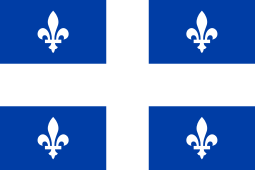
Architect:
Walter Travis & C.H. Alison
Year Built:
1917 & 1922
The duo of Hugh Alison and Walter Travis are not exactly likely to turn up in Shawinigan, Quebec, but given this placement on our list, Canada is lucky that they did. In fact, their collaboration here is one of the couple properties they both touched, including Milwaukee, Sea Island, and oh, Pine Valley.
Walter Travis was the first to lay hands on this originally Albert Murray golf course, and when Alison showed up five years later, he had to figure out a way to interweave Travis’ seemingly polar opposite style with his own. What remains in a master class in compression and release: Travis’ fierce style opens the golf course with the first five bruisingly introducing the golfer to Grand-Mere before Alison offers a reprieve at the 6th. Travis is back from the 9th & 10th before Alison brings us home starting at the 11th.
Of the notable highlights, the 4th is among the best short fours in the country, while the stretch from 13 through 17 seems to draw inspiration from Alison’s time at Pine Valley.
 23. Coppinwood
23. Coppinwood
[Previous rank: 19th]

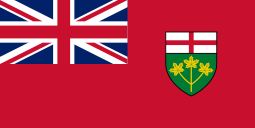
Architect:
Tom Fazio
Year Built:
2007
Tom Fazio’s second, and to date last, Canadian course sits about an hour north of Toronto, on one of the best natural properties for golf in the country. In some circles, Fazio comes under harsh criticism for favouring style over substance; at Coppinwood, however, he managed to find a satisfactory balance between them, allowing the natural terrain to dictate play where the land is best, and using strategic bunkering and clever green complexes where it is less intense, especially on the front nine. The back nine is the better of the two sides, and among the best in Canada, with the massive punchbowl par 3, 11th, the tumbling 12th featuring a quasi-cape style tee shot, and the roller-coaster par 5, 15th, being the standouts.
While it did not factor in our assessment, omitting to mention the practice facility, which includes three full-length holes and a wedge range, would be a massive disservice to the club; in truth, one would be hard-pressed to find a better “player’s club” in the country than this.
 22. Calgary
22. Calgary
[Previous rank: 20th]


Architect:
Willie Park Jr., Ron Forse
Year Built:
1922
Among the Golden Age golf courses in Canada, very few pack as much interest into a small parcel of land like Willie Park Jr.’s Calgary Golf & Country Club, which originally started as a Tom Bendelow routing. After the aggressive uphill par 5 (to a green with a knob in the front kicking balls every direction but straight), the golfer is transported to the top of the property. The WPJ calling cards here—such as the par 3’s being in close proximity (other than the 15th)—are notable, but even those unfamiliar with his work will notice the wildly undulating set of greens.
As with many great classic golf courses, the routing slowly progresses to the final exclamation point: the 15th alongside the Elbow River; the 16th over the rolling terrain; the 17th with parts of downtown Calgary looming over; and the epic par 4, 18th, falling down the hillside next to the Elbow River mark one of, if not, the best closing stretch in Canada.
 21. Muskoka Bay
21. Muskoka Bay
[Previous rank: 22nd]

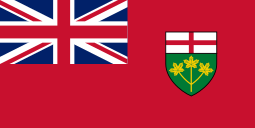
Architect:
Doug Carrick & Ian Andrew
Year Built:
2007
If there is a harder golf course in Canada, Muskoka Bay is—at the very least—in the discussion. The swampy and rocky elements at such a dramatic property merge to provide a thrilling ride, while also producing excellent golf holes. The par 4, 9th, playing through a small rock outcropping to a green far bigger than the eye reveals is exhilarating (although controversial), and the 1st, high atop its surroundings, is a stark opening hole. Add in a wonderful set of par 3’s at the 2nd, 6th, and 11th in particular, and you have a demanding, but interesting layout.
Forgotten in all the flashiness of the drama is the set of greens, which are a highlight in Doug Carrick’s catalog thanks to then-associate Ian Andrew’s creativity. Some greens fall away from the golfer in the front, others sit high atop the hillsides falling off on three sides. For fans of Ian Andrew, the redan green at the 6th will feel right at home, but the small details in the greens are what really separate Muskoka Bay from the rest of Doug’s catalog.
 20. Memphrémagog
20. Memphrémagog
[Previous rank: 21st]

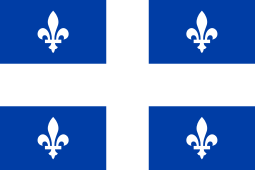
Architect:
Thomas McBroom
Year Built:
2008
Since opening in 2008, much has been made and speculated of the privacy and exclusiveness of the club, located about fifteen minutes south of the bucolic town of Magog; once through the gates, however, one who is lucky enough to do so finds an elegant and old-world atmosphere that is never pretentious nor unwelcoming.
The golf course itself sees McBroom operating at the peak of his game; in comparison to the understated and subtle Öviinbyrd, another McBroom design which the club most closely resembles structurally and in terms of exclusiveness, it is big, bold, brash, and unapologetically difficult. From the long and sweeping 3rd and 5th, to the downhill 520 yard 6th with contouring mirroring the far-off mountain ridge, McBroom continues to show multifaceted strengths. The hundred-foot plunging 10th, the side-hill 11th through stately pines that brings to mind Augusta National, and the strategic 17th with a tricky green cut into a hillside just over a meandering creek, round out the set of par 4s that rival the best in Canada.
 19. Beacon Hall
19. Beacon Hall
[Previous rank: 18th]

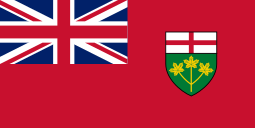
Architect:
Bob Cupp & Thomas McBroom
Year Built:
1990
Such a contrast in nines is common in small towns across the country when they accumulate enough wealth to build a new nine years after their original golf course. Typically, it feels weird and out of place, though at Beacon Hall, it feels like Bob Cupp & Thomas McBroom unequivocally expose you to the brilliance of this property in a way that gives it its own identity
The front nine starts in the trees over some hilly terrain, and while it produces good holes like the 2nd, 3rd, and 9th, the best of Beacon Hall comes from the expansiveness of the back nine. The par 3’s at the 11th and 16th are both best in class, while the par 5’s provide risk-reward options perfectly suited for match play.
The contrast is a sharp juxtposition, but Beacon Hall benefits all the more from it: there is no golf course in the country quite like this.
 18. Victoria
18. Victoria
[Previous rank: 24th]

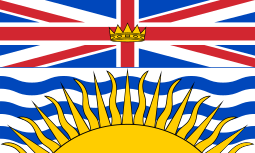
Architect:
Harvey Combe, A.V. Macan, Jeff Mingay
Year Built:
1906
Oceanside golf is rare in Canada, but Victoria certainly has its fair share of it, utilizing the ocean on the 4th-5th, 7th-10th. This produces one of the most compelling stretches of golf in Canada, highlighted by the volcano-esque green at the 5th and the swooping dogleg left par 4, 7th, down to the ocean, with its best-in-class green complex. Without question, tackling the ocean so early in the round is an unusual decision, but the inland holes, highlighted by Macan’s brilliant architecture and only further improved by Jeff Mingay’s astute eye for history, provide a fitting balance with a notable quirk and funk.
Perhaps most surprising about Victoria is the size of its property. At well under 100 acres with Beach Drive running through, most architects would largely agree this property is not suitable for golf (ocean aside), though as he did at he did at No. 90 Marine Drive, Macan was up for the challenge.
 17. Öviinbyrd
17. Öviinbyrd
[Previous rank: 14th]

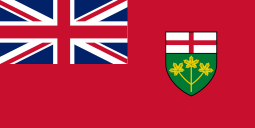
Architect:
Thomas McBroom
Year Built:
2007
Rather than many of Thomas McBroom’s other golf courses on this list, Öviinbyrd is rather understated. The reliance on flashy bunkers and overdramatized green complexes is not to be found here. Instead, sophisticated concepts are brought to life over a beautiful piece of ground for McBroom’s magnum opus.
Sure, moments like the par 3, 8th, and the par 3, 14th, both playing over the swampy Muksoka land with rock outcroppings, are as “postcard” as anything else McBroom has built, but the restraint at the long 7th or the drivable 10th continue to impress. The way rock formations sit into the landscape, instead of jutting out abruptly, is something we wish other courses in Muskoka would call upon.
 16. Goodwood
16. Goodwood
[Previous rank: 17th]

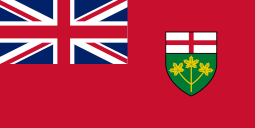
Architect:
Donald Steel, with Martin Ebert & Tom Mackenzie
Year Built:
2007
Although within an hour from downtown Toronto, Goodwood is incredibly difficult to find, and that in itself is a significant feat in today’s era of technology—no entrance sign or gate, but an unmarked road winding up to the clubhouse. Upon arrival, the tumbling property cut through the glacier moraine lets you know you’re in for something special.
Such grace and fluidity in the concepts presented are rarely a modern trend, with the golf course teetering between extreme features and subtle brilliance. The green complexes roll as if they were the ocean waves crashing against the beach, while the routing meanders up and down the moraine to create a riveting golf experience. On assignment for Donald Steel, Ebert & Mackenzie’s architectural touch shines through here to create their single best addition to the Canadian golfing landscape.
 15. Mount Bruno
15. Mount Bruno
[Previous rank: 16th]

Saint-Bruno-de-Montarville
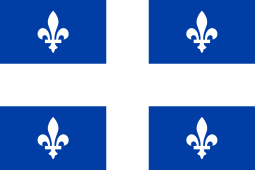
Architect:
Willie Park Jr., Thomas McBroom
Year Built:
1918
As opposed to No. 16 Goodwood, where massive humps, hollows, and ridges define the greens, Bruno’s set is so complex, riddled with intricacies that only experience can see that they can likely claim the finest set in all the land. The complexity is not only a highlight, but is the main excitement of this venerable Willie Park Jr. layout.
There is nothing overly flashy or particularly dramatic here, which may draw criticism from some who prefer the aggressive hazards and features of modern architecture. Its routing, prancing up and down the hillside to produce some subtle, yet superb shots at the 7th and 14th, as examples, and the green complexes throughout the round more than make up for any unassuming features. Excellent architecture is scattered throughout the property at the demanding par 3, 8th, thought-provoking doglegging left par 4, 11th, and the stunning 14th. The green on the long par 3, 15th, truly is unbelievable in the best way possible.
 14. Pulpit Club (Paintbrush)
14. Pulpit Club (Paintbrush)
[Previous rank: 11th]

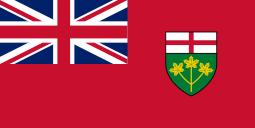
Architect:
Dr. Michael Hurdzan & Dana Fry
Year Built:
1991
A golf course draped over such interesting terrain ought to provide one of the most stimulating experiences, and thankfully, that sentence rings true for Paintbrush, over its sandy, rolling terrain northwest of the city, where it lends itself to bouncy, links-inspired golf. The 2nd, a short par 5 interrupted by a massive knoll to the left of the green, is unlike anything in Canada. As is the 5th, playing completely blind to a bathtub style green.
Our panellists specifically identified the joys of playing a course like Paintbrush, which provides uncertainly in bounces, results, and score. As a bit of a call back to the Old World, rock formations and rock walls are scattered throughout the property, none better than on the par 4, 17th, working on a diagonal angle to a semi-boomerang green.
 13. Westmount
13. Westmount
[Previous rank: no change]

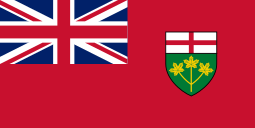
Architect:
Stanley Thompson, Robbie Robinson, Doug Carrick
Year Built:
1931
A very interesting study into the family tree of Stanley Thompson is part of what makes Westmount so interesting. In fact, Thompson’s golf course has been split up by a handful of Robbie Robinson holes, and in recent years, Doug Carrick has touched up the golf course to merge the two styles together.
In reality, we almost do a disservice to Westmount by describing it as such as it provides some thrilling golf over quintessential parkland golfing terrain: the opening long par 5 sets the tone, and the par 4, 18th, bookends the routing perfectly. In between is as charismatic, highlighted by the par 3, 3rd, and the following par 4, the short 8th, and very enjoyable par 4, 14th, with a devilish green.
 12. Blackhawk
12. Blackhawk
[Previous rank: no change]


Architect:
Rod Whitman
Year Built:
2003
Rod Whitman’s career is an interesting case study into the evolution of architecture trends. Blackhawk is where the concept of minimalism—at the scale and aesthetic of Tom Doak, Bill Coore, and other contemporaries in the United States have been building— was introduced in Canada.
In truth, Whitman had been building minimalism at No. 53 Wolf Creek Old and No. 50 Wolf Creek Links for two decades before Blackhawk, but the spaciousness of holes like the 2nd, 11th, and 13th feel distinctly new and groundbreaking, where the concept of width, angles, and big, wavy greens introduced golfers to the trends down south for the first time in the country.
The genius of the routing reveals itself on multiple plays, where one realizes the front nine plays around a central rise and the back nine dives into the North Saskatchewan River valley.
 11. National Golf Club of Canada
11. National Golf Club of Canada
[Previous rank: 15th]

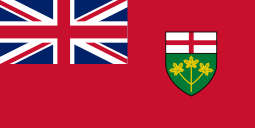
Architect:
George & Tom Fazio
Year Built:
1976
Votes for 1st-2nd-3rd: 1-0-1
The flamboyant persona of Tom & George Fazio’s architecture is a natural fit for “The National Golf Club of Canada” just north of proper Toronto limits, and as a result, stays in the favourites of many Canadians some 50 years after opening.
The layout is quite difficult (and proud of it), requiring golfers to really push the limit of their capabilities. On holes like the 8th or 17th, the Fazio tandem asks, “how high can you hit this,” whereas the 3rd and 14th allow golfers to play the ground if they so choose.
The most interesting golf comes when the layout interacts with the undulating property in various ways, such as the 7th with a fall off on the left, the 13th dropping into the valley, and the 14th playing directly over a gorge.
 10. Sagebrush
10. Sagebrush
[Previous rank: 9th]

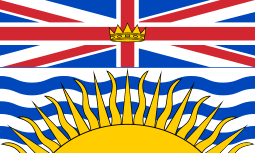
Architect:
Rod Whitman & Richard Zokol
Year Built:
2009
After closing in 2014, Sagebrush made a triumphant return to the golf scene in the summer of 2021. Thankfully, those who embarked on the journey to revive Sagebrush realized the golf is too compelling and interesting to be grown over, and perhaps more than any other golf course in the country, Sagebrush is comfortably individualistic.
The two greens at the 7th and 16th are the biggest outside of Old Macdonald (Bandon) in North America, and the shared fairway at the 11th and 14th is a whopping 150 yards wide. Aside from the memento highlights, there are some all-world golf holes scattered around these rocky hillsides. The up and over 2nd, with the Nicola Lake in the background is exhilarating; the 5th, where you can putt from the fairway is unique; the bunker-less 8th is a roller coaster; the short 12th is said to be inspired by Pine Valley; and the shelf par 4, 15th is quirky and fun.
As an added interest, Sagebrush is a bit of a “who’s who” in the Canadian architecture scene, with Jeff Mingay, Keith Cutten, Riley Johns, and Trev Dormer all providing a hand at one point or another, while famed agronomist Armen Suny also contributed in the project’s early stages.
 9. Hamilton (West/South)
9. Hamilton (West/South)
[Previous rank: 10th]

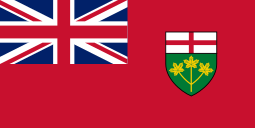
Architect:
Harry Colt, C.H. Alison, Martin Ebert & Tom Mackenzie
Year Built:
1915
A Harry Colt routing draped over the hilly terrain of southern Ontario is a winning combination, especially when Colt is at his routing best, finding ways to gallop up and down the hills in a traingular fashion, much like the famed routings at Shinnecock Hills in New York and Muirfield in Scotland. As a result, no two holes are alike here, and interactions with Ancaster Creek come frequent, but never two-a-pair.
This also results in some fascinating golf holes, and no better than perhaps the dogleg left par 4, 7th, up the hill. The 3rd and 14th are brilliant as well, and those who love the drivable par 4’s will enjoy the 5th. Shades of Colt’s heathlands influence pop up on the 9th, but the parkland nature is the real star of the show on holes like the 10th and the famed 18th playing back up to the clubhouse.
Following an extensive renovation from Martin Ebert & Tom Mackenzie, 18 new greens from the duo, plus their own bunker scheme provide a distinctly modern feel to this classic golf course, and its new ethos will be ready to shine for the 2024 RBC Canadian Open.
 8. Banff Springs (Championship)
8. Banff Springs (Championship)
[Previous rank: no change]


Architect:
Stanley Thompson, Robert Trent Jones Sr.
Year Built:
1927
Nearby Jasper Park Lodge was Stanley Thompson’s first great golf course, but Banff Springs was what propelled him into being Canada’s first megastar in the architecture world.
As expected, the par 3’s are excellent: the combination of the long 10th, playing over the Bow River and the narrowing 13th’s ying to the short 2nd and 8th’s yang. The heavyweight is the famous Devil’s Cauldron at the 4th, where ther golfer places over a glacier inlet to a semi-punchbowl style green wraps up perhaps Thompson’s best set, or at the very least, a strong contender.
Aside from the usual Thompson par 3 standouts, his bunkering style, which cuts into landing areas on diagonals, is a strategic marvel and got the most out of a relatively flat piece of ground at the base of the Rocky Mountains.
 7. Cape Breton Highlands Links
7. Cape Breton Highlands Links
[Previous rank: 6th]


Architect:
Stanley Thompson, Ian Andrew
Year Built:
1941
Votes for 1st-2nd-3rd: 1-1-2
Designed by Stanley Thompson in 1941, Highland Links was and remains one of the world’s best-routed layouts. In fact, one could claim that a sample of nearly all of the foremost types of Canadian golf can be found among the eighteen here: holes across rumpled, quasi-links land; holes featuring ocean vistas; holes traversing mountainous terrain; holes along a low-lying riverbed; and holes of the more traditional parkland kind. Its variety is its strength, and, despite the large acreage which it covers, the golf course never feels disjointed nor sequestered, the truest testament to Thompson’s brilliance.
Unfortunately, in recent years much of the discussion about the course, which is owned by Parks Canada, has focused on its poor-conditioning, lack of drainage, and sylvan overgrowth, as well as the unfortunate and out of place remnants of the renovation done by Graham Cooke’s firm in the mid-1990s. Thankfully, Ian Andrew was hired to nurse the course back to health following the extensive damage it sustained from Hurricanes Earl and Igor in 2010, and since, he has managed to recover much of brilliance and uniqueness that had been lost to neglect over the years. At the time of publication, the conditioning may not yet be quite up to the standard most would expect from a course repeatedly ranked among the world’s 100 best, and there still remains some overgrowth to clear; however, such imperfections are merely minor bothers among the surrounding brilliance of one of the world’s true golden age gems.
 6. Toronto (Colt)
6. Toronto (Colt)
[Previous rank: 7th]

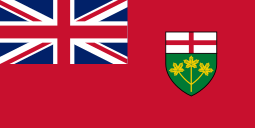
Architect:
Harry Colt, C.H. Alison, Martin Hawtree
Year Built:
1912
Votes for 1st-2nd-3rd: 2-2-2
After Harry Colt’s initial 1911 visit, Toronto Golf club became the benchmark against which golf courses in Canada were measured, and in some respect, still are.
First time visitors will be surprised how demanding this golf course is, even at the benign length of 6800 yards. The stark contrast between the Hail Mary type shots at the 4th, 5th, 7th, and 15th juxtaposition nicely against the ground game at the 9th, 13th, and 17th, while the progression of the routing, beginning in the flats before playfully dancing around the creek starting at the 9th, continues to prove inspiring to this day.
With only two par 5’s, the two-shot holes provide the majority of the interest. The diabolical pseudo-redan at the 4th and C.H. Alison’s par 3, 14th, are some of the standout 3’s in a great collection of one shot holes. For Canadian golf, there are few places we would rather spend a day at.
 5. Capilano
5. Capilano
[Previous rank: no change]

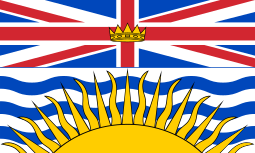
Architect:
Stanley Thompson, Doug Carrick
Year Built:
1937
Votes for 1st-2nd-3rd: 0-0-1
Capilano’s routing is so highly regarded that even Robert Trent Jones Sr., Thompson’s protégé at the time, tried to claim credit for the details in the dirt. While not true, he had it right: Capilano is one of golf’s great routings, tumbling down the West Vancouver mountainside.
The golf course begins by tumbling down the hillside towards downtown Vancouver for the first six holes, featuring views of the city skyline, Vancouver Harbour, and the Lion’s Gate Bridge. After a brief refrain, the journey begins back up to the clubhouse at the 9th before ending in the bowl around the clubhouse for the final five.
What is particularly interesting is, unlike Thompson’s par 3 calling card, the par 4’s standout. The side shelf 2nd is sporty; the narrowing 7th green is terrifying; and the bunker-less par 4, 13th, climbing back to the clubhouse playing over a gorge, might be the best of them all. Amongst many other praises, Capilano’s finishing five holes are often cited as the best finishing stretch in Canada.
 4. Cabot Cape Breton (Cliffs)
4. Cabot Cape Breton (Cliffs)
[Previous rank: 1st]


Architect:
Bill Coore & Ben Crenshaw
Year Built:
2016
Votes for 1st-2nd-3rd: 3-3-2
Much was expected of the second course at the resort thanks to Coore’s and Crenshaw’s involvement—their first project in Canada—as well as the pictures that widely circulated of the now world-famous 16th green site and the heroic, diagonal cliff hugging tee shot on the 17th. As evidenced by its immediate ascension to the top of nearly every ranking of Canadian golf courses, the American duo delivered on the promise, weaving the layout—featuring six par 3s, 4s, and 5s—around the tremendously diverse and rolling property of marsh, wetland, forest, and links-land along the Gulf.
Holes such as the plugging and uber-wide 2nd, the punch-bowl 6th with a unique front to back tiered green, the up and over par 5, 15th, and, of course, those perched along the cliff immediately catch the eye; however, it is the more subtle, and often unexpected, architectural details and the clever shaping work—particularly the bunkering and the green complexes—that elevate the course from a collection of great holes to a truly cohesive, consistently wonderful whole.
 3. St. George’s
3. St. George’s
[Previous rank: 2nd]

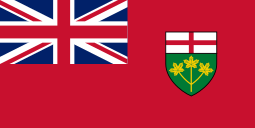
Architect:
Stanley Thompson, Robbie Robinson, Tom Doak & Ian Andrew
Year Built:
1929
Votes for 1st-2nd-3rd: 1-4-1
Nestled in the quiet suburb of Etobicoke near downtown Toronto and Toronto-Pearson Airport, St. George’s has been an institution in Canada, hosting six Canadian Opens, including 2022’s edition won by Rory McIlroy amongst the LIV Golf distractions.
It is not the Canadian Opens that make this comfortably among the best golf courses in Canada. Rather, Stanley Thompson’s routing journeys around some of the most fruitful clay-based topography not only in Canada, but the world. Rather than routing the holes above the depressions, in a similar manner to No. 5 Toronto Golf Club, St. George’s largely plays at the bottoms of the valleys, acting as faux-dunes that once had St. George’s coined “a wee bit o’ Scotland in Canada.”
The opening eight holes, for example, are perfectly executed as they sidewind through the creves of the property, which creates dramatic one-shot holes at the 3rd and 8th below while the 6th plays above. The 2nd, an all-world par 4 battles the ravine crossing off the tee, and the 1st, 4th and 5th play at the bottom of the property. The inward stretch starting at the 12th makes golfers hold on until the finish, showing the teeth of the golf course and proving Thompson envisioned this as his championship style golf course. A masterful bunker restoration from Tom Doak & Ian Andrew has St. George’s about as close to the top as one can get.
 2. Jasper Park Lodge
2. Jasper Park Lodge
[Previous rank: 3rd]


Architect:
Stanley Thompson
Year Built:
1924
Votes for 1st-2nd-3rd: 3-2-4
Among the admirers of Jasper Park Lodge, Stanley Thompson can rest proudly knowing Alister Mackenzie, George Thomas, and Tom Doak enjoy the first of the “Thompson Five,” a strong list of contemporaries supporting this rankings best golf course in Canada.
“JPL”, as its so lovingly called, is one of the game’s best journeys, prancing around the mountain setting as it explores the meadows, the mountains, and the lake, all while balancing the dicotomy between the card-wrecking holes (3rd, 4th, 8th, 9th, 15th), and the legitimate birdie opportunties at the 2nd, 5th, and 10th. To the keen eye, a handful of one-shot holes act as the card-wreckers, while the par 5’s balance out to make a plethora of half-par holes for maximum enjoyment. Very few golf courses feel as if they tell a story, but Jasper Park does just that, climaxing alongside the shores of Lac Beauvert before tumbling down the hillside and ending on what Dr. Alister Mackenzie called “the best finish in the world of golf.”
 1. Cabot Cape Breton (Links)
1. Cabot Cape Breton (Links)
[Previous rank: 4th]


Architect:
Rod Whitman
Year Built:
2012
Votes for 1st-2nd-3rd: 6-6-1
Set between the bucolic town of Inverness, Nova Scotia, and the Gulf of St-Lawrence on a perched strip of land that was formerly a coal mine, the flagship course for the Cabot Collection is one of the few authentic links in North America, and it certainly lives up to the then hitherto unheard of hype it generated prior to opening for a Canadian project throughout the golf world.
A veteran architect and shaper who has worked for some of the best-known modern firms, Whitman’s dexterity at blending the work of nature with the craft of hand and machine means that it is nearly impossible to determine the great effort and time that were needed—both from him and from Ben Cowan-Dewar, the visionary and owner of the project—to transform the scarred and ruined property into the natural-looking, rumpled, varied, and thought-provoking end product.
From the strategic and quasi-drivable 3rd, to the 500 yard cape-style 5th bending around the harbour of the town, to the thrilling up-and-over 10th going straight out at Gulf, to the cliff-hugging 15th and 16th , the set of par 4s here is among, if not the best in Canada. All this while coupling the crisp fescue turf with ever-present coastal winds makes the neccessity for ground game so much more invigorating, and further emphasizes Whitman’s astute contouring of the greens, which, as a whole, are also among the exceptional in the country.
Share this with your friends!
Related
Continue Reading
×

Discover more from Beyond The Contour
Subscribe now to keep reading and get access to the full archive.
Continue reading

